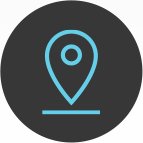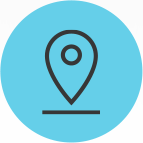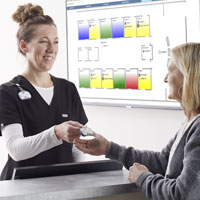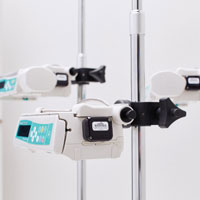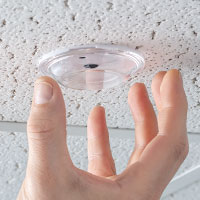Cultivating Cancer Care Efficiency Through RTLS Technology

12/11/2023
This article was originally printed in Healthcare Business Today, with permission to reprint.
From administering medication to performing lifesaving surgeries to delivering routine care in a timely manner, caregivers impact patients and their outcomes every day. Oftentimes, the efficiency throughout the care continuum is what can make the difference—especially in oncology settings where quickly treating a patient is often rooted in their survival.
In the latest U.S. News & World Report annual rankings, the top cancer center performers were recognized for their efficiency and patient experiences. Five of the top 11 have at least one thing in common. They support improved patient workflows with real-time locating system (RTLS) technology that:
- Provides insight into the progression of every patient visit, at any given time.
- Is consistent and accurate, making it possible to help support caregivers with the in-the-moment information they need.
- Pays attention to the logistics so clinical staff don’t have to.
- Helps visualize operational and patient experience data to help leaders improve the bottom line.
Backed by our 30 years of healthcare RTLS experience, Midmark partners with five of the top oncology centers, with a sixth actively engaged in bringing RTLS technology online, as well as a variety other community cancer centers throughout the United States. Our sophisticated patient flow solution, coupled with our eye for clinical operations, allows caregivers to deliver and coordinate timely care for cancer patients across the nation.
As a Customer Success Coaching Manager, my team of clinical experts is with our customers every step of the way to lay this foundation with technology. And once live, we continue to collaborate with oncology leaders through the support of data analysis and customer results. Setting a new standard for operations and experiences, RTLS helps drive informed decision-making and quality care.
Timely Status Updates With Less Effort
When we worked hand-in-hand with our first cancer center, we collaborated to adapt our patient flow optimization solution to the specific needs of oncology. A cancer patient isn’t a typical patient, nor is their appointment experience traditional. They may start at labs, visit with the physician and care team, progress to radiology and complete the visit with infusion. They are constantly moving throughout the facility for the duration of their visit, and there are a few things to keep in mind with this experience.
First, insight into the patient visit is critical to streamlining the workflow. With RTLS badges that transmit location information to a network of sensors placed throughout the facility, clinical staff can visualize a holistic picture of where every patient is in their visit, displayed on a digital dashboard. What is the next stop in the patient’s appointment? Have they seen the physician yet? How long have they been in the infusion chair? Have they been waiting alone for too long? (More on this later.) This information helps staff keep the visit progressing.
Second, automatic location visualization adds layers of efficiency to both the care team and pharmacy. Consider patients arriving at each stop in their visit. Once the patient has arrived at infusion, for example, their presence is displayed to the reception desk, and they can complete the check-in without the need for the patient to wait in line, increasing efficiency and enhancing the patient experience. Or consider the timeliness of mixing medications and how that is communicated between clinical staff and the pharmacy. Knowing the status of a patient and automating the communication when the patient is ready for treatment helps reduce delays or waste if medication is mixed too soon.
And third, the digital dashboard provides a hands-free approach, allowing clinical staff to focus more on patient experiences and less on logistics. I have seen some oncology clinics use a physical whiteboard to track visit progress and make notes, or try to use their EMR by “clicking” the patient into the next phase of care. This can be a faulty process. It adds extra steps in the care experience, it’s prone to human error or forgetfulness and it’s impossible to analyze for accurate performance indicators.
Instead, the RTLS badges and locating network do this legwork for the caregiver on the back end. Once the caregiver has arrived in a room or patient is in an infusion chair, the location is displayed on the digital dashboard. Caregivers can focus on treating patients (and in turn, see more patients altogether), and less on tracking steps.
Alone Time is the New Wait Time
Patient wait time is a constant struggle in healthcare. Some will argue it’s just the name of the game. I argue that patient alone time, rather, is influencing the patient experience even more. Hospitals and clinics must understand the difference and the impact alone time has on the experience. Here’s how I think about it: “Wait Time” is the time that patients spend in a waiting room. “Alone Time” is the time that patients spend in care areas without a caregiver present.
Perhaps a patient is waiting alone in their exam room as they anticipate the physician to arrive. The tricky part is this alone time is impossible to track without technology.
With a RTLS, clinical staff can visualize the difference between wait time and alone time, as well as receive instant alerts set on a configured time duration. Once the system recognizes a patient has been alone for too long, the alerts provide staff the opportunity to proactively check in with the patient or give them a status update. It’s a little step that makes a big difference in the overall patient experience, especially with the sensitive nature of cancer care. When staff are aware of patient wait and alone times, this non-value-added time naturally decreases.
Fueling Process Change with Data
In many situations, whether in our personal or professional lives, we make decisions based on supporting evidence. With RTLS technology, having the data to support decision-making can be game-changing. From chair utilization to chair turnover, from intake duration to patient overall length of stay, these key performance indicators are automatically tracked by RTLS data. When visualized through reporting, this data helps administrators understand what’s happening and what operational improvements can be made.
Perhaps infusion chairs are booked non-stop, forcing patients to wait longer for treatment. The data can help you determine that more chairs may be needed to keep up with the patient volume. On the flip side, maybe chairs are empty too often, which brings into question the ability to better coordinate your scheduling to see additional patients and increase revenue.
Perhaps one medical assistant takes an average of 12 minutes to do an intake, but another only takes four. What are the roadblocks causing this discrepancy? Do you have an opportunity to be more efficient so you can in turn see more patients daily?
RTLS data provides insight into what you are capable of doing. It provides visual cues for performance and areas of improvement. It’s an opportunity to provide more access to patient care and help treat patients in critical need.
Nurture the Experience to Cultivate Efficiency
RTLS technology helps cultivate efficiency. With cancer patients, that is what it’s all about: delivering timely care and treating as many patients as possible. The top cancer centers in the nation have it figured out, and the efficiency that stems from their RTLS technology is second to none.
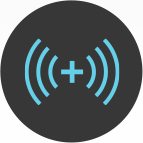
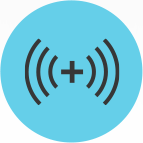 Nurse Call AutomationAutomatic call cancellation to lighten the nurse workload and give more time back to the patient care experience.
Nurse Call AutomationAutomatic call cancellation to lighten the nurse workload and give more time back to the patient care experience.
 Staff SafetyDiscreet, accurate and real-time alerts through a wearable duress button that helps provide an efficient response and protect staff against workplace violence.
Staff SafetyDiscreet, accurate and real-time alerts through a wearable duress button that helps provide an efficient response and protect staff against workplace violence.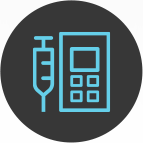
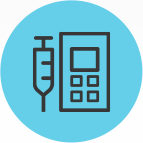 Asset TrackingIn-the-moment equipment locating to support safe and timely patient care and controlled costs.
Asset TrackingIn-the-moment equipment locating to support safe and timely patient care and controlled costs.
 Patient FlowEnhanced communication designed to optimize operations, enrich patient experiences and improve staff satisfaction.
Patient FlowEnhanced communication designed to optimize operations, enrich patient experiences and improve staff satisfaction. AnalyticsDerived from actionable insights at your fingertips, accurate location information drives informed decision making.
AnalyticsDerived from actionable insights at your fingertips, accurate location information drives informed decision making.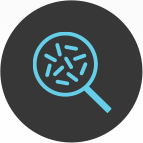 Contact TracingQuick, accurate information at your fingertips for your contact tracing efforts.
Contact TracingQuick, accurate information at your fingertips for your contact tracing efforts.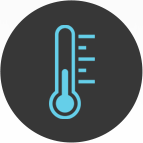
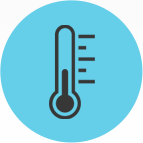 Temperature MonitoringA partnership of best-in-class solutions, available through an interface with Primex environmental monitoring.
Temperature MonitoringA partnership of best-in-class solutions, available through an interface with Primex environmental monitoring.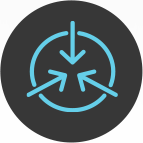
 InterfacesA seamless architecture that exchanges data automatically between your RTLS and other enterprise applications in real time.
InterfacesA seamless architecture that exchanges data automatically between your RTLS and other enterprise applications in real time.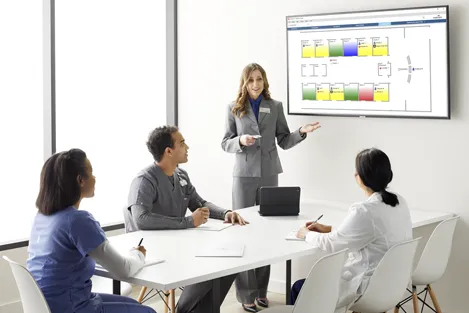

 RTLS System Integrator ResourcesDiscover our library of sales and marketing resources.
RTLS System Integrator ResourcesDiscover our library of sales and marketing resources. Case StudiesSee how we’ve helped our customers design better, more efficient care.
Case StudiesSee how we’ve helped our customers design better, more efficient care. White PapersEmbrace innovation in your health system with thought leadership.
White PapersEmbrace innovation in your health system with thought leadership.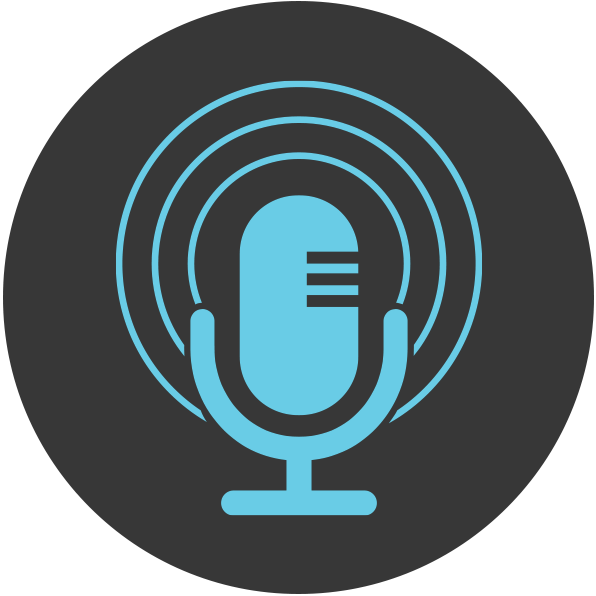 Webinars + PodcastsListen to the latest from Midmark RTLS here.
Webinars + PodcastsListen to the latest from Midmark RTLS here.
 BlogThink differently and solve problems with new ideas to enhance patient care.
BlogThink differently and solve problems with new ideas to enhance patient care. Published PerpectivesChange is a constant in healthcare—and we’re leading the way. Read our recent bylines and articles.
Published PerpectivesChange is a constant in healthcare—and we’re leading the way. Read our recent bylines and articles. InfographicsLet us show you the whole picture with real-world applications.
InfographicsLet us show you the whole picture with real-world applications. RTLS Press ReleasesFind out what’s happening at Midmark RTLS. View the latest news about Midmark RTLS and the healthcare industry.
RTLS Press ReleasesFind out what’s happening at Midmark RTLS. View the latest news about Midmark RTLS and the healthcare industry.

